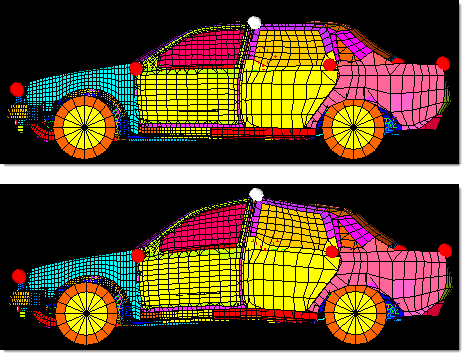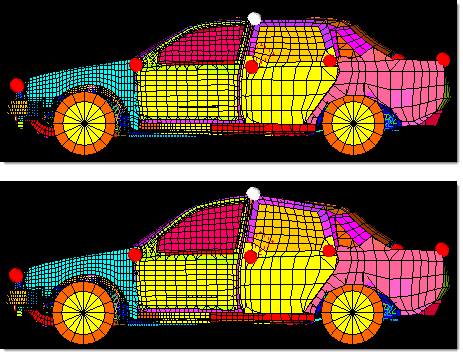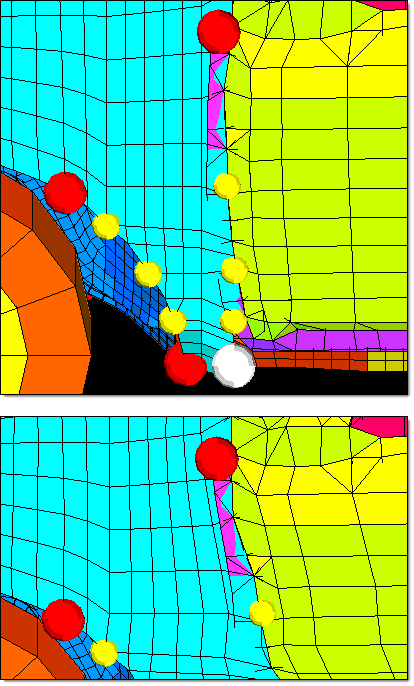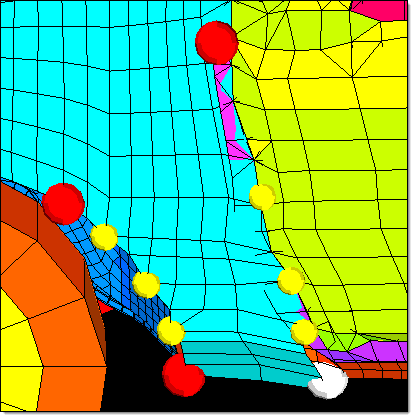Controlling Global Morphing with Handle Placement |

|

|

|

|
|
Controlling Global Morphing with Handle Placement |

|

|

|

|
Global morphing differs from local morphing in that there are no definite boundaries between the handles that restrict their zones of influence. When you perform global morphing operations, the parts of the model that are morphed are those that lie between the handles that are moving and those that are not. For the general space frame cases, positioning handles at the joints between the members of the space frame restricts the handle influences to the parts of the frame that they are touching. However, for cases where you are trying to morph a mesh that covers a wide area, you will need to place several handles across both of sides of the zone of influence.
You can visualize the handles as places on a sheet of rubber where you are placing your fingers. If you place three fingers on one side and two on the other and try to stretch the sheet, the space between your fingers on the two finger side will be pulled towards the three finger side. By placing three fingers on each side, you allow for even stretching to occur between each set of fingers. In morphing this is accomplished by placing handles evenly along both sides of the mesh to be stretched.

Controlling global morphing with handles – part 1
The handle on the roof is moved upwards and the center section of the car is
morphed along with it.

Controlling global morphing with handles – part 2
A handle is added directly below the handle on the roof near the center of the car.
Now when the handle on the roof is moved upwards, only the part of the car
between the roof and the handles along the midline of the car is stretched.


Adding handles to control global morphing
Using several handles on either side, the fender of the model is morphed.
Note that dependent handles are used to simplify the morphing operation.
Also note that in cases where detailed shape changes are required, morph
volumes will usually yield better results.
See Also:
Matching a Mesh, Line, or Surface Data
Mirror Images - Using 1-Plane Symmetry